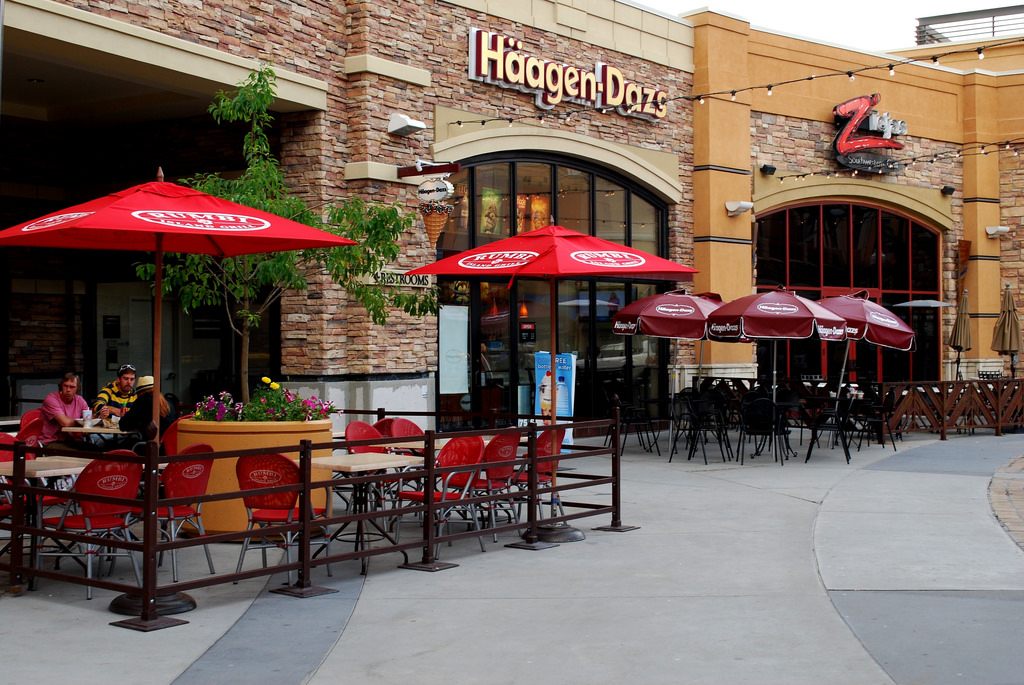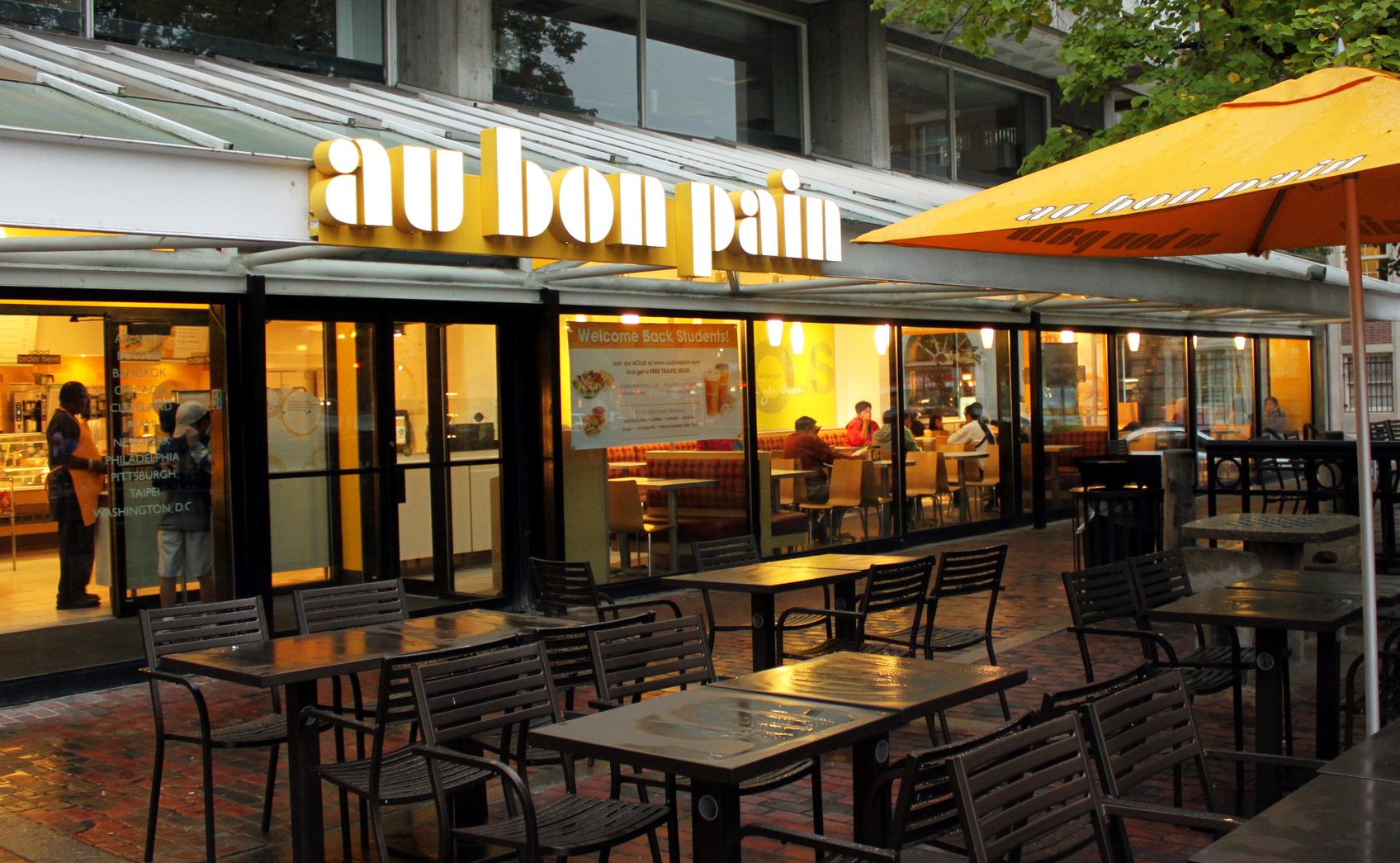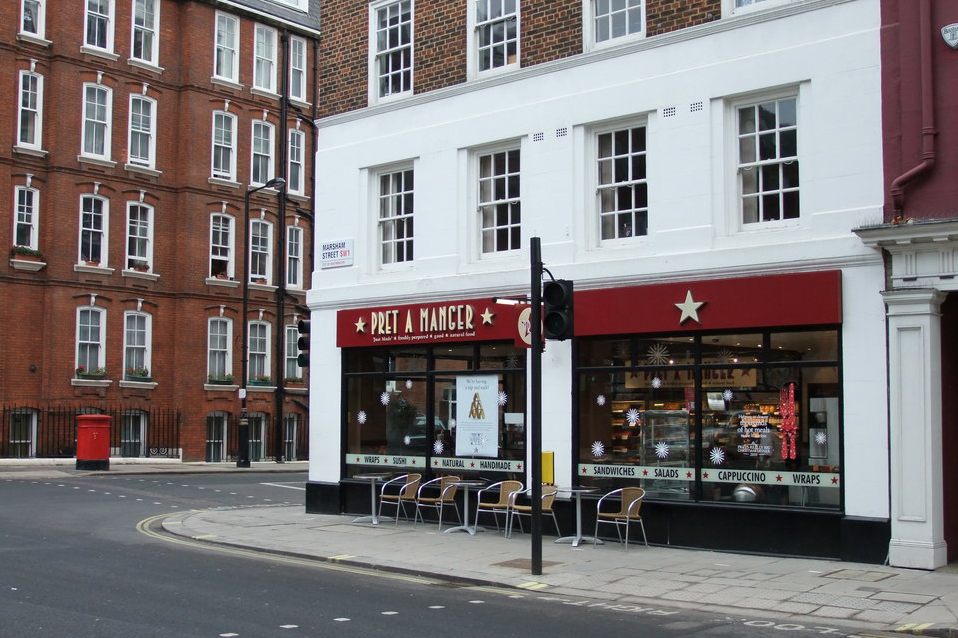Häagen-Dazs Ice Cream Is From the Bronx—So What’s With the Name?
Examining the phenomenon of the faux-foreign product.

Häagen-Dazs ice cream is one of the most fascinating and strangest linguistic marketing attempts that’s ever actually succeeded. The company was founded in 1961 by Reuben and Rose Mattus, a Polish Jewish couple who, coincidentally, each emigrated to the U.S. in 1921. American Jews have a long history in the ice cream business, but unlike, say, Ben & Jerry’s, which was named after its cofounders, Häagen-Dazs was named mostly at random.
Reuben Mattus told Tablet Magazine in 2012 that the name for his company was inspired by Mattus’s admiration for Denmark’s treatment of Danish Jews during World War II, and that he sat around trying out Danish-sounding names until he hit on one he liked. But the phrase “Häagen-Dazs” not only has no actual meaning in Danish (or any other language), it does not follow Danish language conventions. There is no umlaut in Danish; it is found in some Germanic languages, including semi-archaic uses in English like the word naïve, as well as in French, Dutch, Spanish, Welsh, and a few other languages.
Technically speaking, those two dots above a letter can signify two different things. One is called diaeresis, which indicates that two adjacent vowels that would normally be pronounced as one sound should actually be given two syllables, each with its own sound. Naïve, for example, includes two adjacent vowels—called a digraph—of “a” and “i.” If you didn’t know better, you’d pronounce “naive” as “knave” or “knive.” The diaeresis tells you not to combine those two vowels into one sound, but to leave them be as separate entities, “ah” and “ee.” Diaeresis can also be seen in English words like cooperative (not “coupe-erative”) and names like Chloe (not cloh).
If we assume that the dots in Häagen-Dazs is a diaeresis, it should be pronounced “Hah-AH-gen dazs.” Which it is not.

Those two dots, though, are usually referred to as an umlaut, which is specific to German and a few other languages like Hungarian and Swedish. It has a completely different function than the identical-looking diaeresis, in that it just changes the sound a vowel makes. It has the same effect on any vowel it appears on, which is to “front” the vowel. “Fronting” is a linguistic term referring to the position of your tongue in the mouth; to “front” a vowel means to pronounce it with your tongue more forward, toward your teeth. Given an umlaut, “Häagen-Dazs” should be pronounced “Heh-gen dazs.” Which it also is not.
This is all sort of moot, because Danish, the culture and language that inspired Mattus to name his brand, does not have either an umlaut or a diaeresis. Danish does have the letter Å, though its sound is more like the vowel in “your.” This letter, considered a different letter than the letter A without the little circle on top, is the modern version of the digraph “aa.” But it would not be ever found as “åa,” because the accented letter replaced the digraph; you use one or the other. In any case, Håagen-Dazs would be pronounced something like “hoh-gen dazs” or “hoh-ah-gen dazs,” neither of which, we can all agree, is correct.
The “zs” ending is also a problem; it is found exclusively in Hungarian, and is a soft “J” sound, as in the word “usually” or the name “Jacques.” This would turn the newly Hungarian Häagen-Dazs into “hah-gen dazjh.” (English doesn’t really have a good way to indicate that consonant. In the International Phonetic Alphabet, it’s written as “/ʒ/” and referred to as a voiced fricative. If that ever helps you win a Jeopardy question or something, let us know.)
What Mattus was doing is a marketing tool known as foreign branding: the use of a foreign or foreign-sounding word to indicate something about that product. By definition, foreign-branded products are lies; this does not apply to a product, like, say, Fjällräven, which is a Swedish word for the arctic fox, because Fjällräven the company is actually Swedish.

There are plenty of examples to be found in North America. Cafe chain Au Bon Pain is from Boston. Ginsu Knives started out in Ohio. Pret a Manger is British. Popov vodka is made by the American subsidiary of a British brand. Agent Provocateur is British. Comme des Garçons is Japanese. A whopping two-thirds of all Italian-branded products—that might mean an Italian or Italian-sounding name, or a picture of Italy on the packaging, stuff like that—do not originate from Italy. (There’s a pretty decent chance your “aceto balsamico” is just red wine vinegar with flavorings and made in a vat in Massachusetts or California.)
Foreign branding is a touchy, difficult subject in multiple ways. There’s a distinct risk of causing offense through stereotyping or unintended meanings of words. Honda, for example, decided at the last minute to name the North American and European version of its Jazz hatchback as the “Fit” rather than the “Fitta,” because it turns out “fitta” is an extremely vulgar word for female genitalia in Sweden.
It’s also a difficult task to figure out exactly which foreign culture to imply. Different countries, and populations within those countries, have entirely different opinions of foreign nations. What exactly is the general opinion of Germany in Denmark? Of Japan in Argentina? Of Italy in Ghana? “Although it may be generalized as the customer’s nationality, it has been found that there are significant differences in how people with the same nationality, but from different subcultures (e.g. French vs. English Canadians) evaluate foreign products,” says Thomas Aichner, an assistant professor of marketing at Alfaisal University who studies how country-of-origin affects consumers. Does a long history of antagonism between French and Anglo Canada mean that Anglo Canadians do not have the same feeling about French products as do other former UK colonies like the U.S. and Australia?

Much of this stuff comes down to just knowing your audience. Take Switzerland. Around the world, certain products are thought to be high-quality if they come from Switzerland, like watches. But other products aren’t so simple. In Germany, says Aichner, a Swiss-branded cheese could do very well; Germans, at least according to marketers, believe cheese from Switzerland to be of high quality. (One of Germany’s most famous cheeses, Emmenthaler, comes from a Swiss recipe.) But in France, cheese from Switzerland does not carry the same weight. There has actually been a legal debate over where Gruyere comes from. (The French think it’s from France, the Swiss think it’s from Switzerland. The Swiss won that battle.)
Whether the fact that foreign-branded products are lies affects consumers who learn the truth is another risk. Aichner worked on a study informing customers in a German supermarket that Häagen-Dazs is not, in fact, Danish at all, but a hearty Bronx product. The willingness to buy Häagen-Dazs products dropped 68 percent. But things get weirder: 63 percent of customers decided if they were to buy, the price would have to decrease, but a third of all the customers were willing to pay more than before, now that they knew the ice cream was American. In the U.S., a Danish-sounding name might indicate quality to Americans, but in Germany, it seems, American-made ice cream is nothing to sneer at.

The weirdest part of the Häagen-Dazs story came in 1980. That year, a New York dairy began selling a brand of ice cream called Frusen Glädjé. That name translates, almost, as “frozen delight,” though the final accent on “Glädjé” should not be there and thus reduces the name to something more like “frozen delite.” Shortly after Frusen Glädjé launched, it was sued by Häagen-Dazs. A quote from the initial complaint: “Plaintiff concludes that defendants have intentionally packaged their product in a manner calculated to trade upon ‘plaintiff’s unique Scandinavian marketing theme.’” That packaging included a clear list of minimal ingredients, a list of artificial ingredients not found in the ice cream, and a map of Scandinavia.
Häagen-Dazs lost the court battle, but Frusen Glädjé was soon sold to Kraft and then shuttered. Häagen-Dazs eventually stopped printing a picture of Scandinavia on its packaging, but the name—incredibly incorrect and all—remains.
Gastro Obscura covers the world’s most wondrous food and drink.
Sign up for our regular newsletter.
























Follow us on Twitter to get the latest on the world's hidden wonders.
Like us on Facebook to get the latest on the world's hidden wonders.
Follow us on Twitter Like us on Facebook